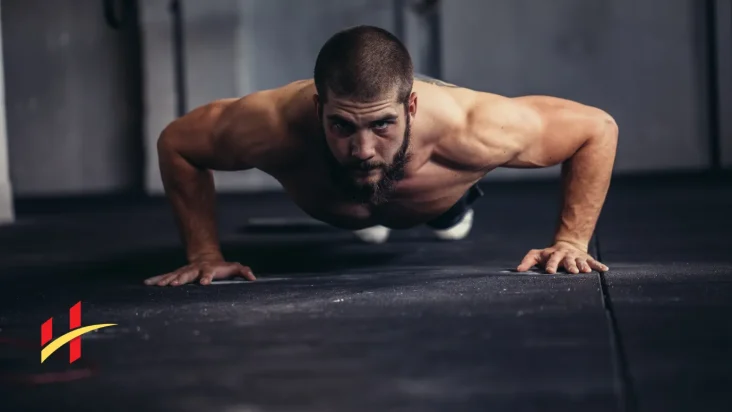What Muscles Do Push Ups Work, Push-ups are a popular and effective exercise that many people do to strengthen their muscles and improve their overall fitness. They are a simple yet powerful way to work out multiple muscle groups in your body without needing any fancy equipment. In this easy-to-understand guide, we will explore the muscles that push-ups work and how doing push-ups can benefit your body.
When you do a push-up, you use several muscles in your upper body, core, and even your legs. Understanding which muscles are involved can help you do push-ups correctly and get the most out of your workout routine.
One of the main muscle groups that push-ups target is the chest muscles, specifically the pectoralis major and minor. These muscles are located in the front of your chest and are responsible for pushing movements like pushing open a heavy door or lifting objects away from your body. By doing push-ups, you can strengthen and tone these muscles, giving your chest a more defined appearance.
Additionally, push-ups also work your shoulder muscles, including the deltoids and the rotator cuff muscles. These muscles help stabilize your shoulders and arms during the pushing motion of a push-up. Strengthening these muscles can improve your shoulder stability and reduce the risk of injuries.
Furthermore, push-ups engage your core muscles, including the rectus abdominis (commonly known as the abs) and the obliques. These muscles help stabilize your body and maintain proper form while doing push-ups. Strengthening your core can improve your overall stability, posture, and balance.
Lastly, although push-ups primarily target upper body muscles, they also engage your lower body to some extent. Your quadriceps, hamstrings, and glutes help support your body during the push-up movement, providing a full-body workout experience.
Muscle Groups Engaged During Push-Ups:
- Chest Muscles (Pectorals): Push-ups primarily target the pectoralis major and minor muscles, which are responsible for chest strength and development.
- Shoulder Muscles (Deltoids): The anterior deltoids are activated during push-ups, assisting in shoulder flexion and stabilization.
- Triceps Brachii: Push-ups engage the triceps, located on the back of the upper arm, as they assist in elbow extension during the exercise.
- Core Muscles: The rectus abdominis, obliques, and transverse abdominis muscles are engaged to stabilize the torso and maintain proper body alignment.
- Serratus Anterior: This muscle, located on the side of the chest, aids in shoulder movement and scapular stability during push-ups.
Variations of Push-Ups and Targeted Muscle Areas:
- Standard Push-Ups: Target the chest, shoulders, triceps, and core muscles.
- Wide Grip Push-Ups: Emphasize the outer chest and shoulders.
- Narrow Grip Push-Ups: Focus on the triceps and inner chest.
- Incline Push-Ups: Reduce intensity while targeting the upper chest and shoulders.
- Decline Push-Ups: Increase intensity by elevating the feet, targeting the lower chest and shoulders.
- Diamond Push-Ups: Engage the triceps and inner chest with hands positioned close together.
Benefits of Including Push-Ups in Fitness Regimens:
- Upper Body Strength: Push-ups help build strength in the chest, shoulders, and arms.
- Core Stability: Engages core muscles for stability and balance during the exercise.
- Versatility: Various push-up variations allow for targeting specific muscle groups and accommodating different fitness levels.
- Convenience: Requires minimal equipment and can be done anywhere, making it a convenient bodyweight exercise.
- Functional Fitness: Improves overall upper body endurance and functional strength for daily activities.

Tips for Effective Push-Ups:
- Maintain Proper Form: Keep the body in a straight line from head to heels, engage the core, and avoid arching or sagging.
- Controlled Movements: Lower the body slowly and push up with controlled movements to maximize muscle engagement.
- Gradual Progression: Start with modified push-up variations if needed and gradually progress to standard push-ups and advanced variations as strength improves.
- Consistency: Incorporate push-ups into regular workout routines for optimal results and muscle development.
Conclusion
In conclusion, push-ups offer a wide range of benefits for overall upper body strength, muscle tone, and functional fitness. By understanding the muscle groups targeted and incorporating different variations, individuals can customize their workouts and achieve their fitness goals effectively.



